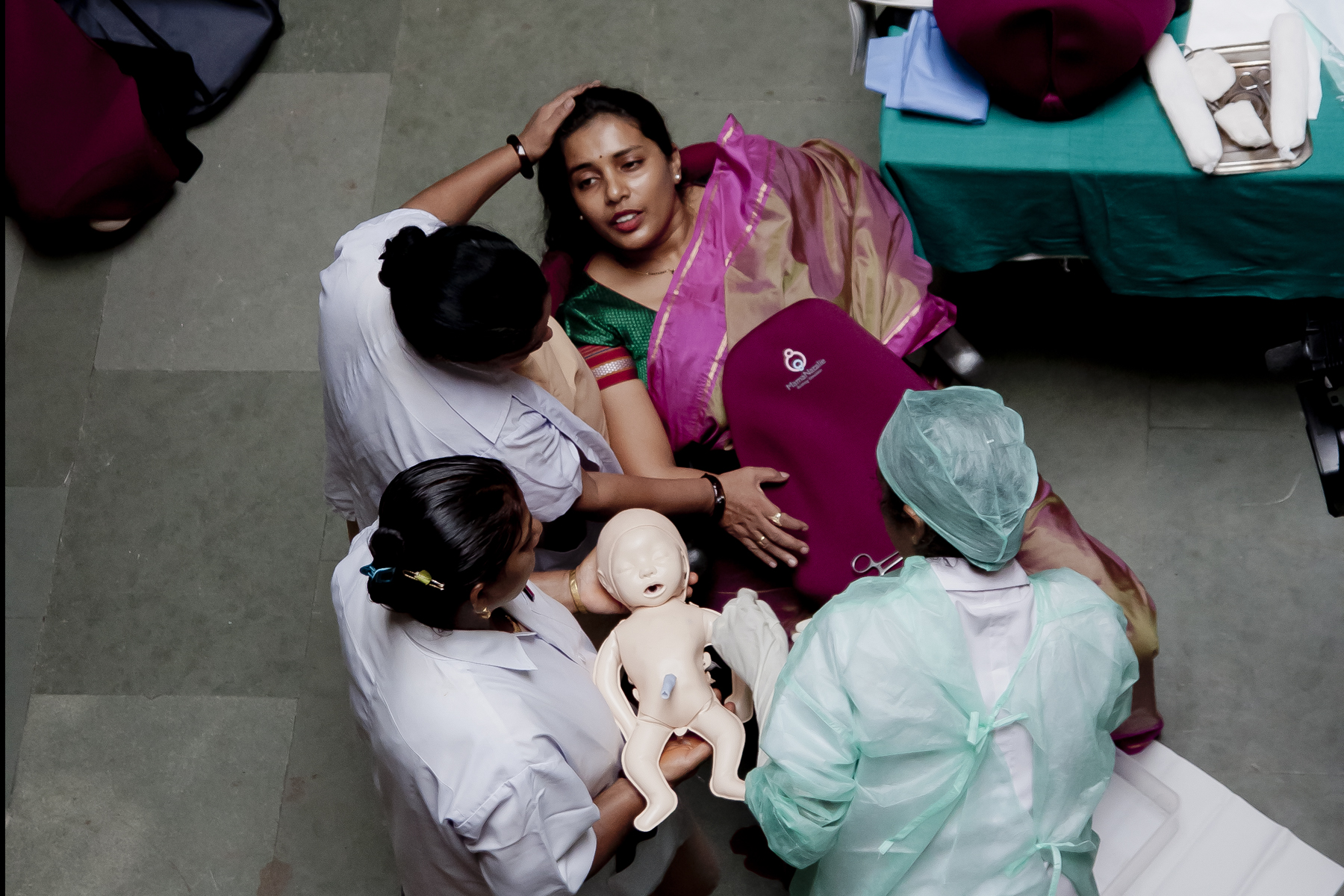
Helping Mothers Survive
The Helping Mothers Survive suit of training programs provide health workers with skills to prevent and manage the leading causes of maternal deaths.
Addressing prematurity in Ethiopia
Around the world, 15 million babies are born prematurely, every year. One million of these die. Ninety percent of these are in low-income countries.
The World Health Organization (WHO) recently presented groundbreaking new evidence published in the New England Journal of Medicine about the lifesaving potential of initiating Kangaroo Mother Care immediately after birth. Kangaroo Mother Care (KMC) is the practice of skin-to-skin contact and exclusive breastfeeding. In this study, it was shown that implementing KMC immediately, rather than waiting until after stabilization of low birth weight newborns which is the current guideline, was shown to reduce neonatal mortality by 25%.
This new evidence supports one of our most exciting projects, Saving Little Lives (SLL), funded by the Global Financing Facility (GFF) a partnership with the World Bank. Saving Little Lives is a bundle of neonatal interventions that address the primary causes of neonatal mortality. Saving Little Lives incorporates the well-known Helping Babies Breathe program, now including both an educational module for Essential Care for Small Babies and Kangaroo Mother Care. This project is an example of innovation to scale. Not only does it demonstrate impact, but also a strong investment case and opportunity for future development.
Ethiopia has set ambitious goals to increase child survival. Saving Little Lives is a government-led, evidence-based intervention that targets the key drivers of mortality for small babies, specifically respiratory distress, infection, and birth asphyxia.
In partnership with the Ethiopian Ministry of Health, UNICEF, and several universities, Saving Little Lives will roll out through 2023 in the 4 largest regions in Ethiopia where it will be implemented in 290 hospitals covering 1/3 of births.
That accounts for 1.28 million births, every year.
The goal of the project is to reach 80% of small babies at the intervention sites and to reduce neonatal mortality by 35% within the scale-up regions resulting in more than 25K lives saved.
Since the project will roll out in phases, continuous data collection and analysis will be used to inform and refine the intervention and to improve program performance. The goal is that the Saving Little Lives intervention will become a sustainable standard of care for other countries to adopt.
As a nurse, Demewoz Gezahegn felt something was wrong with her pregnancy. She went directly to Bishefitu hospital, where she worked. Immediately, her colleagues recognized the signs of pre-eclampsia which is one of the leading causes of maternal death. In these cases, the only way to save the mother is to induce labor. But they knew the baby would be born too soon.
Labor was induced and Demewoz gave birth to a preterm baby girl weighing just 1000 grams. The baby was not breathing at birth. Meskerem Asnake, a fellow nurse and friend, acted fast. She had been trained in the Helping Babies Survive programs which included Helping Babies Breathe and Essential Care for Small Babies – both she would need on this day. Meskerem was able to stabilize Demewoz and resuscitate the baby.
Baby Betselot was admitted to the Neonatal Intensive Care Unit and kept in Kangaroo Mother Care (KMC) which is skin-to-skin contact with the mother. And when she wasn’t well enough, her family members were there to keep the baby on their bare chests in her stead. Kangaroo Mother Care has been shown to reduce newborn mortality of premature babies.
Baby Betselot survived.
